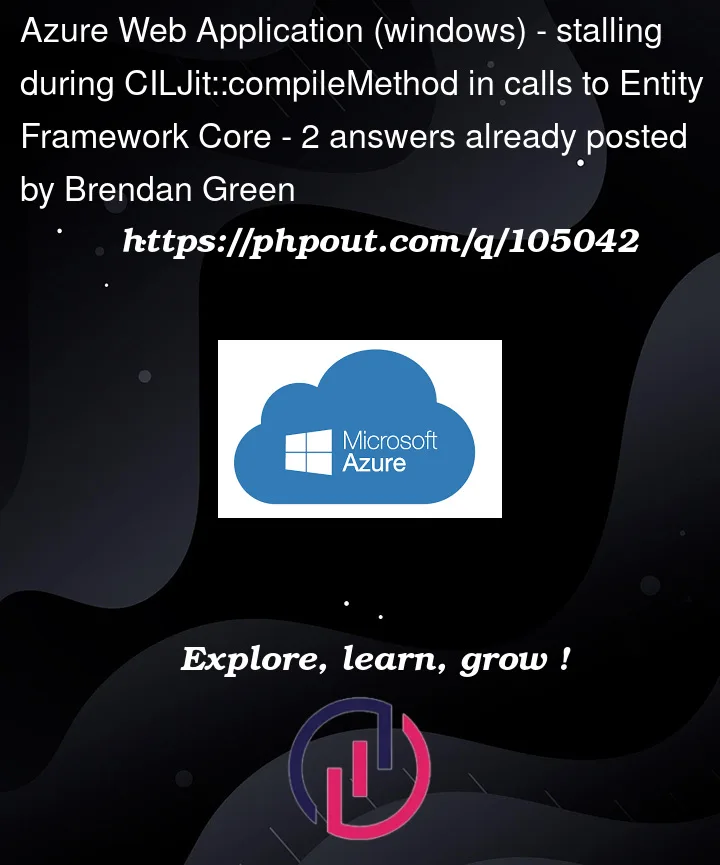I have been looking into performance, specifically calls to an ASP.NET Core 3.1 Web API project that is running on Azure.
Note: yes, we should be moving to a later version of .NET Core, and that’s in the pipeline, but it’s not something I can just switch to without a bit of effort.
We are targeting netcoreapp3.1 for our libraries, and are referencing Entity Framework Core v3.1.5.
Looking at a typical end-to-end trace in Application Insights, we see this:
If I’m reading this correctly, we’re spending a grand total of 135ms in the database executing queries, but between the last 2 queries we appear to stall for ~12 seconds!
When I dig into the profiler trace for this request, I see this:
Again, if I read this right, that means during the second DB call (from our end to end transaction above), we spend ~12.4 seconds inside the call to EntityFrameworkQueryableExtensions.ToListAsync() doing some jit compilation.
That looks excessive to me.
This appears to be a pattern that I see through out the day, even though the application is set to be Always On and there are no restarts of the application between occurrences of this.
The questions I have around this are:
- is this to be typically expected?
- if so, should it really be taking this long?
- is there a way to reduce the need to jit as often as we appear to be doing?
- will a move to .NET 6 (and future framework versions) help us here?
On average, the API operates pretty well, and does have a typical avg response time in the < 1 second range. However, when these do occur, they are noticeable and are causing me a headache.






2
Answers
Had exactly the same problem. After emailing azure with the issue, back and forth, it turns out the solution (that worked for us) was to turn off the profiler. https://github.com/dotnet/runtime/issues/66649
Off option – same in .net / .net core
After turning the option off we went from having over 1,500 requests a day taking over 10 seconds, to none taking over 5.
Thanks,
Dave
Another possible cause of the issue is a confict between the App Insights options configured in the Azure Portal for the App Service, and the App Insights SDK running within the .Net code.
To mitigate this issue, as suggested via an email conversation with Azure tech support, within the Azure App Service App Insights settings…
Enable “Interop with Application Insights SDK(preview) option” to load Auto-Instrumenation & Application Insights .NET Core SDK side-by-side, with Profiler enabled.